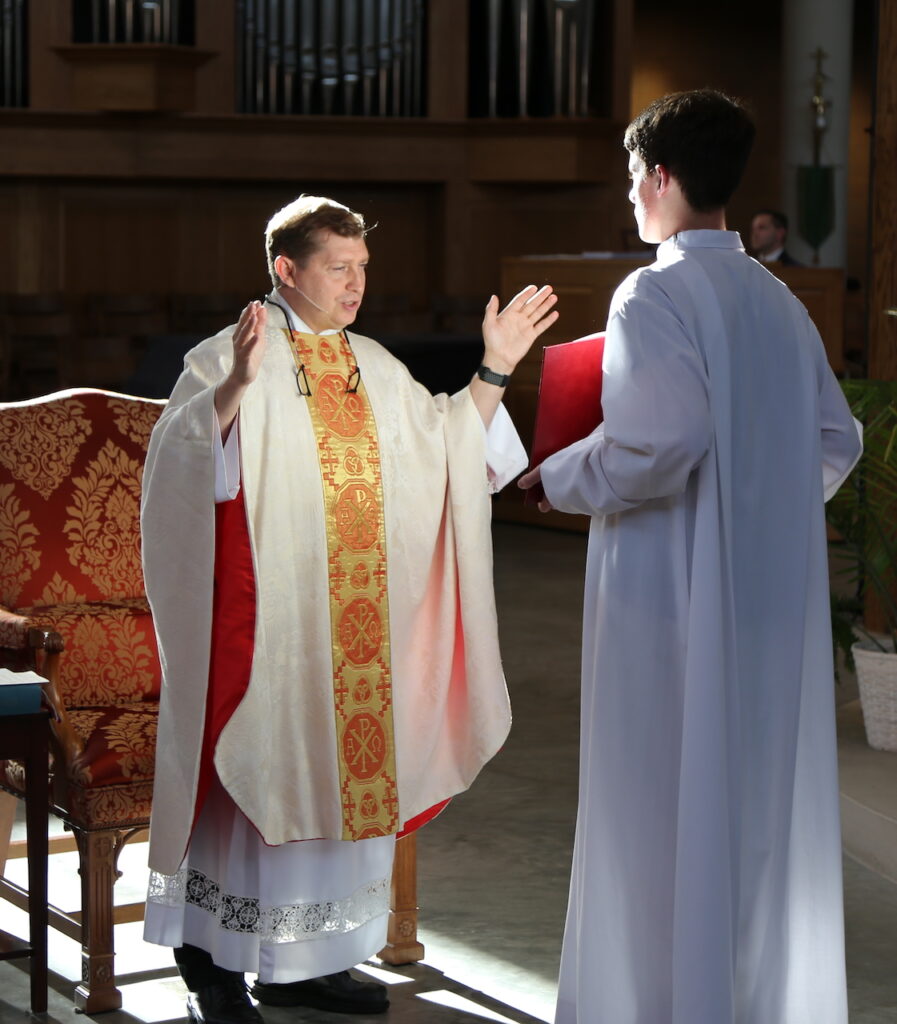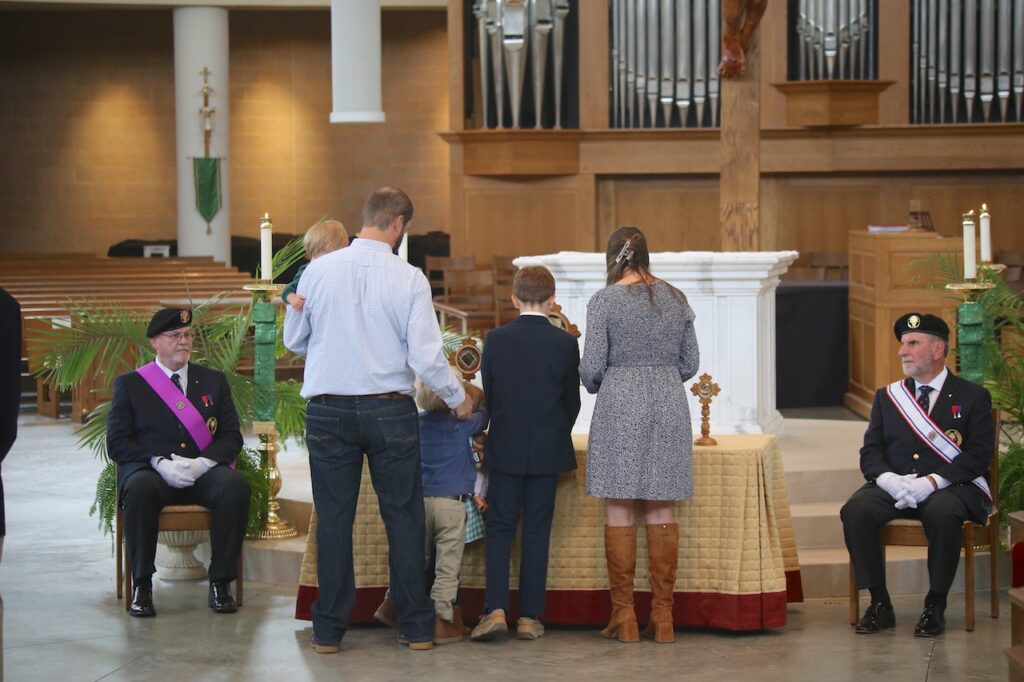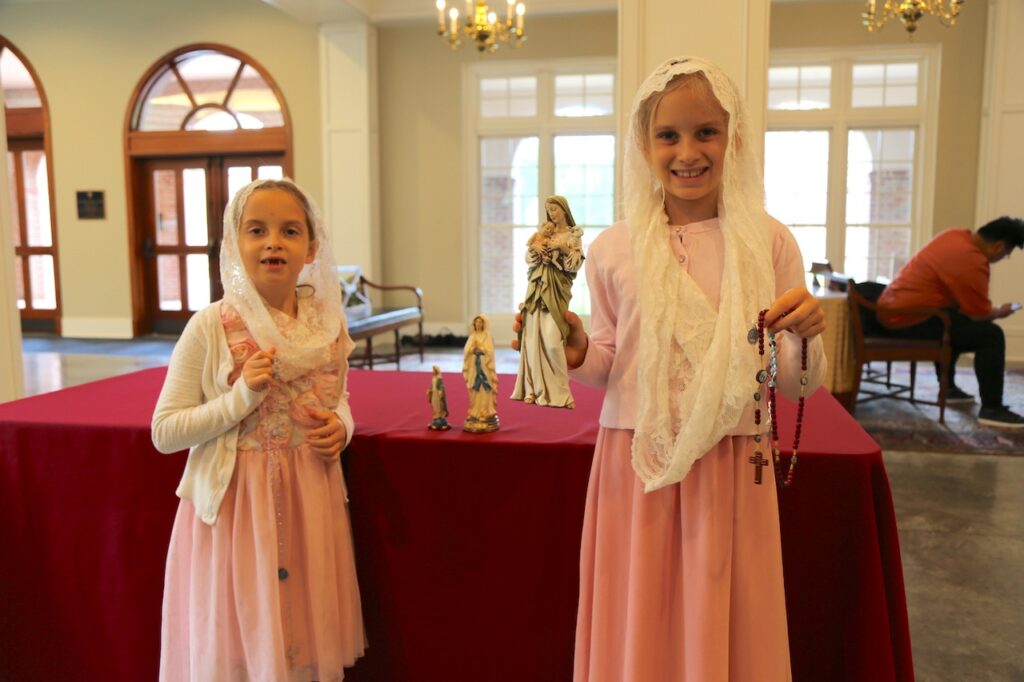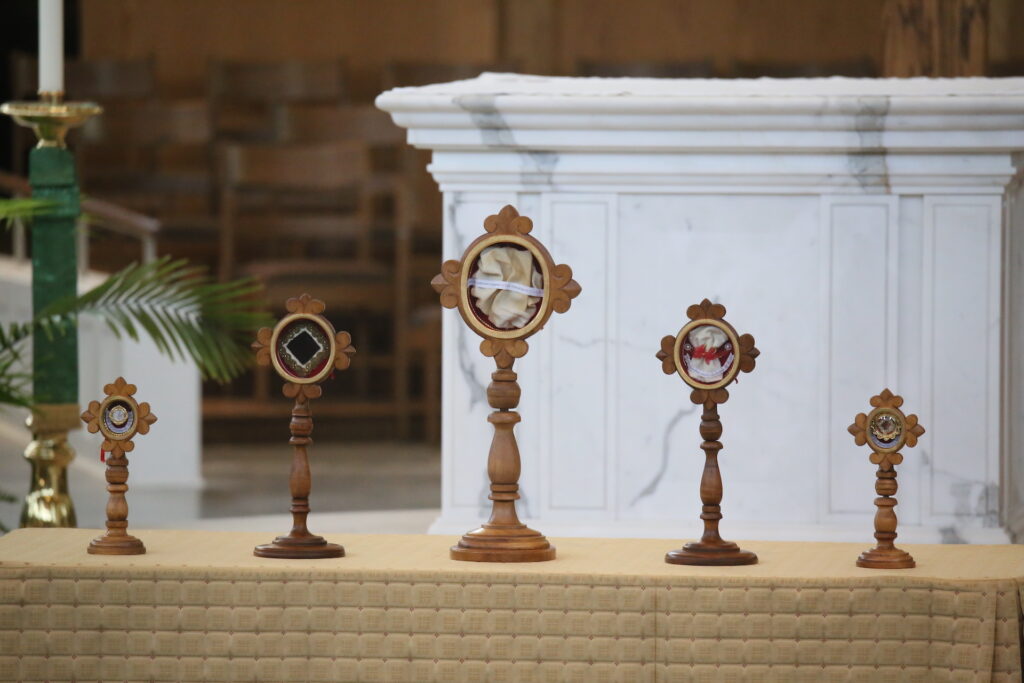“Pray, hope and don’t worry.”
These words, spoken by St. Pio of Pietrelcina, offer a glimpse into the famous Italian mystic’s unshakeable faith and devotion. On Friday, Oct. 6, at St. Bede, Williamsburg, more than 1,600 people gathered to venerate his relics, opening their own lives to the example of his profound divine peace.
“I’m fairly new to his story – I didn’t know about him until I heard about his relics coming here,” said St. Bede parishioner Heather Walters. “His stories of healing are amazing. I’ve been to Europe many times and prayed in front of relics, and it’s always a special experience.”

A Franciscan friar in the Capuchin order, St. Pio – popularly known as Padre Pio – was canonized in 2002 by Pope St. John Paul II. Stories of his miracle-working – including feats of healing, prophecy and bilocation – complemented the appearance of his stigmata to make the priest famous during his lifetime.
“Even as a child, he claimed interactions with the Lord Jesus and with the saints, and he was perplexed to hear that other children did not have them, too,” said Father Eric Ayers, pastor of St. Bede, addressing a crowd of 500 during his homily at Mass the morning of Oct. 6.
“There are many stories of his miraculous intervention through prayer,” Father Ayers continued. “But when Padre Pio was canonized in 2002, Pope St. John Paul II stressed not the supernatural gifts, but the love and charity that were part of Padre Pio’s life. He had such a fruitful spirit because of his deep relationship with Christ.”
St. Padre Pio was known to spend as many as 16 hours a day in the confessional, listening to and absolving people of their sins. He was said to have the gift of reading hearts – that is, if someone forgot to confess a sin, he would prompt them with the details, surprising people with his inexplicable knowledge and his strict exhortations to repent.
Steve Mains, a St. Bede parishioner, a member of the Order of Ancient Hibernians, and a driving force for bringing the relics to the parish, made his own pilgrimage to San Giovanni Rotondo, the commune where St. Padre Pio had lived. His journey came in 2010, 42 years after the saint’s death. According to Mains, the devotion of the Italian people to the country friar was still very strong.
“We got [to San Giovanni Rotondo] on Friday, and Friday night Mass was packed – standing room only in a huge church,” he said. “And everybody in there either knew him or their parents knew him. This town had a recent memory of his life.” This experience, said Mains, was a testament to the impact of St. Padre Pio’s example and the fruitfulness of his spirit.
‘This is my favorite rosary’
Many of the 1,600-plus pilgrims who came to St. Bede on Oct. 6 made third-class relics with rosaries, statues and prayer cards. First-class relics are a body part of a saint – bone, blood or flesh. Second-class relics are possessions or articles of clothing that belonged to a saint. Third-class relics are objects that have been touched to a first- or second-class relic or touched by the saints themselves.
The relics at St. Bede included a lock of St. Pio’s hair, cotton gauze with St. Pio’s bloodstains, his handkerchief, a piece of his mantle and blood from his stigmata. They were on display from 9 a.m. until 5 p.m., and many visitors waited in line for hours for a chance to venerate them personally.
“Veneration of relics goes back to ancient times,” Father Ayers explained. He gave an example from 2 Kings 2:14, in which Elisha parted a river with the cloak of Elijah, and a letter from the Church of Smyrna in 156 in which the faithful gathered the bones of St. Polycarp after he was burned at the stake.
“It’s not that magical powers exist in these objects,” said Father Ayers. “But just as God’s work was done through the lives of these holy people, so his work continues after their death.”

One young Catholic, Laura Quellhorst, age 8, brought her rosary and a statue of Mary to the event. “My friend gave me this rosary, and I wasn’t sure it was blessed, so I thought, ‘Maybe I can make it a third-class relic,’” she said. “Padre Pio is my favorite saint, because he’s the first saint I learned to read about.”
Her sister, Brooke, age 6, brought a rosary with water from Lourdes to make into a third-class relic. “This is my favorite rosary,” she declared, holding the glass beads in the sunlight.
“We visit the shrine of St. Padre Pio in New Jersey when we go to visit my parents, and we always stop there to pray,” said their mother. “He’s somebody that they can relate to, and I can teach Jesus easily through Padre Pio in a way that kids can understand.”

For Charna and Jordan Seibert, parishioners of Our Lady of Mount Carmel, Newport News, it was a special devotion to St. Padre Pio that drew them to the event. Charna is battling stage 4 cancer, and in 2018, she had the chance to venerate his relics in Great Falls, Montana, where they lived at the time. She shares her Sept. 20 birthday with the anniversary of the appearance of St. Padre Pio’s stigmata.
“They had his brown mantle, which they put over me and prayed,” Charna recounted. “I’m still alive, and that was five years ago.”
The Seiberts brought prayer cards to make into third-class relics for their son’s classmates at Our Lady of Mount Carmel School. “For the anniversary of his stigmata, we had the kids do handprint pictures, then painted on a brown glove and a red thumbprint for the stigmata,” said Charna. “Then, all the kids went home with their artwork and a St. Padre Pio prayer.”
Heather Walters brought rosaries for her father, who was keeping vigil at the hospital bed of his fiancée. “I got some rosaries for them, and I’m praying for healing for her,” said Walters.
Reverberations of a saintly life
Maureen Mains told another story of St. Padre Pio’s impact on the Church. “My mother had a neighbor when she was growing up, and during World War II, he became a soldier and went to Europe,” she said. “Towards the end of the war he went to San Giovanni Rotondo to meet Padre Pio and see what these stories were all about.”
During his three-day stay in San Giovanni Rotondo, the young man was selected by St. Padre Pio each morning to serve as an altar boy. On the third day, he told the young man, “You be a priest.” When the young man hesitated, St. Padre Pio said, “You be a priest, take it or leave it.”
The young man would return home and enter seminary, eventually ordained Father Jack McKenna. “If Padre Pio tells you to take it or leave it,” said Mains, “you take it.”

